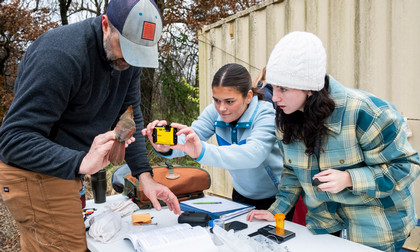
From birds to bats to forest ecosystems, Associate Professor of Biology Andrew George and his students are conducting important research: They're tracking bird populations and migration, capturing and studying federally endangered bats, and taking part in a 100-year experiment in the Ozarks.
Such experiences help them build field skills to prepare them for careers while also contributing to the world of science.
These projects are among many hands-on research opportunities that students get to take part in at Pitt State, some as early as their freshman year.
"Studying bird migration is important," George said. "Shifts in patterns can act as early warning signs of climate change and environmental conditions that impact temperature or food availability."
Patterns can provide vital information about ecosystem health, helps identify potential threats, and allow for conservation efforts to protect migratory routes and habitats.
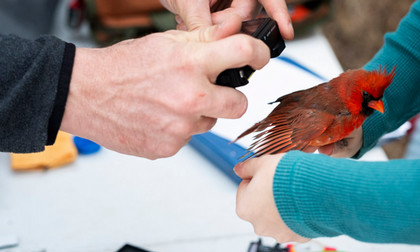
Harris’s Sparrow populations have declined by more than 50 percent over the last 30 years. George is working with undergraduate students like Heather Burrow, a Biology major from Wichita, to track movements of the bird between their wintering grounds in Kansas and their breeding grounds in Canada.
“We’re attaching tiny solar-powered tags to the birds that will tell us where they’re going,” George said.
The goal: To help researchers understand the needs of migratory animals throughout their full annual cycle.
Bird migration in Southeast Kansas and across the state is part of the Kansas Motus Project, to which George and students are contributing research.
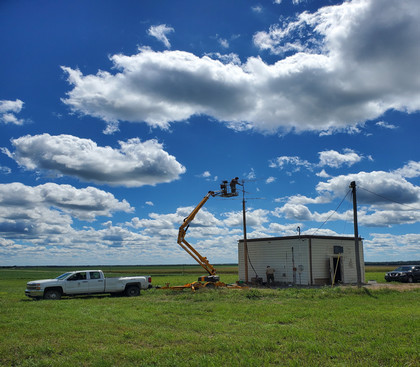
With colleagues from Emporia State University and Kansas State University, they’re developing a network of automated telemetry stations in eastern Kansas to study movements of birds and other migratory animals. They’ve collaborated with many Kansas entities and raised funds to build 20 receiver stations, with more on the way.
“This expansive project is important for many reasons,” George said.
Automated receivers detect the presence of nearby birds, as well as bats, insects, and other animals that are transmitting digitally coded signals. Any tagged animal that passes within about 10 miles of a receiver will be detected and logged automatically. The data is transmitted and stored centrally, then shared with the network.
Over time, patterns will emerge.
George and students also are conducting bird banding – capturing them temporarily to attach tiny metal identification bands to their legs and then releasing them – in Southeast Kansas. Undergraduate students are helping him to establish a bird banding station.
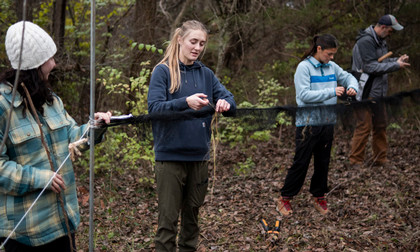
“We band birds one to two weekends per month on several sites including the Monahan Reserve and the Ford property,” George said.
The Gray Bat is a federally endangered species at risk because of disturbance to caves, and potentially White Nose Syndrome, a deadly fungal disease that is affecting many imperiled bat species across North America.
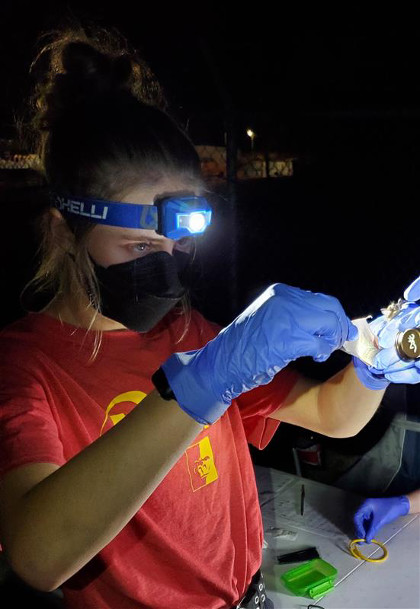
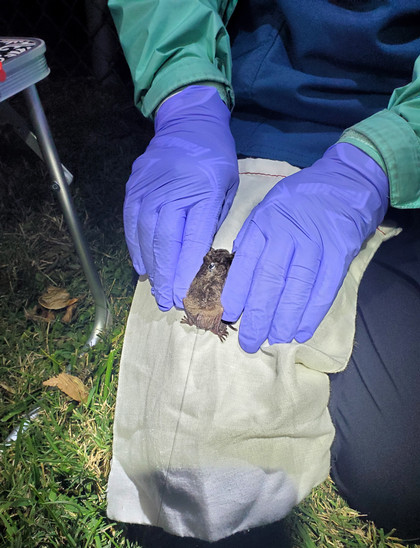
George is working with undergraduate students like Braidy Hunt, a Biology major from Grant City, Missouri, to track movements of Gray Bats between Southeast Kansas and their hibernation caves in the Ozarks of Missouri and Arkansas.
“We are attaching tiny temporary Motus tags to them near Pittsburg,” George said, “and Braidy recently placed detectors at several caves in the Ozarks that will log when one of our tagged bats enters.”
A 100-year landscape-scale experiment to understand the effects of forest management on birds and other ecosystems processes has provided a learning lab for five undergraduate students and three graduate students completing their thesis projects.
Called the Missouri Ozark Forest Ecosystem Project (MOFEP), it is now in its 33rd year.
George has been a research associate with MOFEP since 2014.
Grad student Gabe McCain will be embarking on a new project focused on Prothonotary Warblers, which are threatened by deforestation and degradation of wintering and breeding habitats. He, George, and other students will set up more than 250 nest boxes across the region to study movements and nesting success of the warblers.
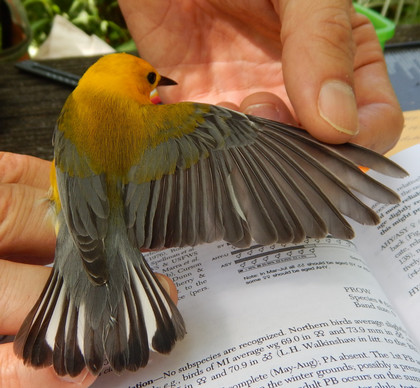
The Biology program has several emphasis tracks focusing on the natural world, from plants to wildlife. Combining both lab and field activities, this program gives students a hands-on, interactive look at the relationships between organisms.
Coursework activities include species identification, habitat assessment, biodiversity surveys, population monitoring, and ecological research.
The Wildlife Ecology and Conservation emphasis track combines a love of the natural world with the desire to protect it. Curriculum focuses on the biology, protection, and management of wildlife and their natural habitats. Students gain a deep understanding of the intricate connections between species and their environment.
Learn more: pittstate.edu/biology